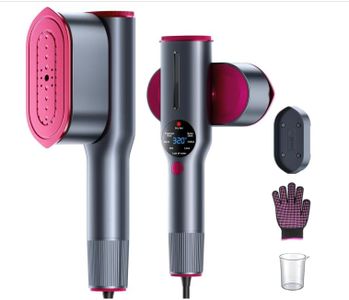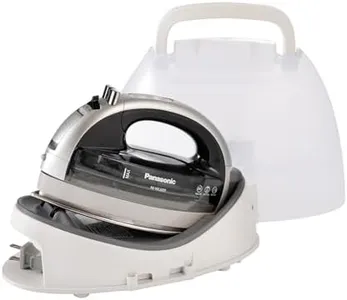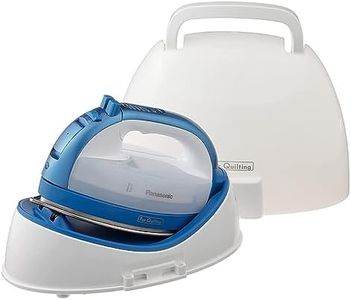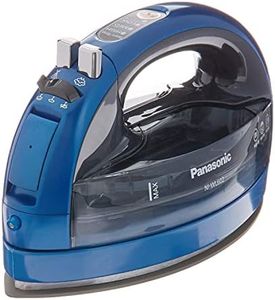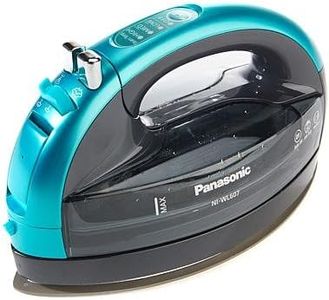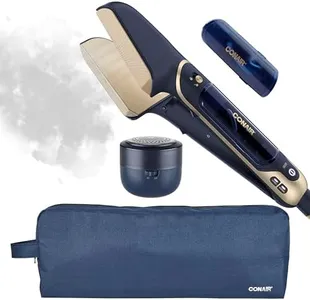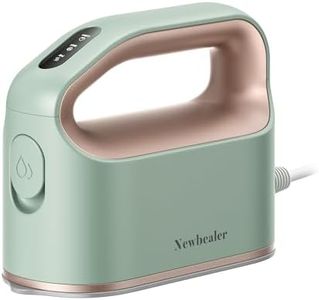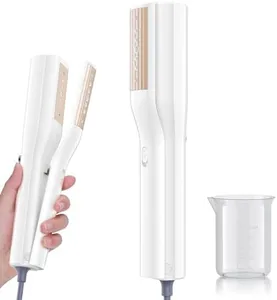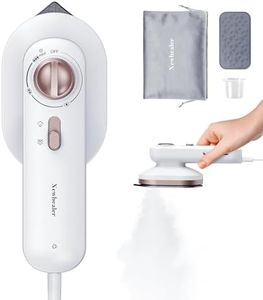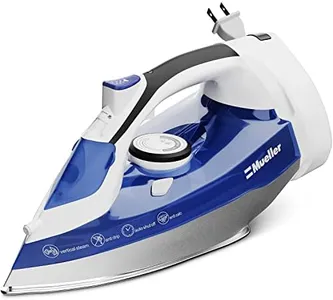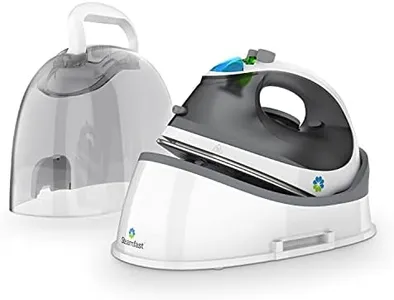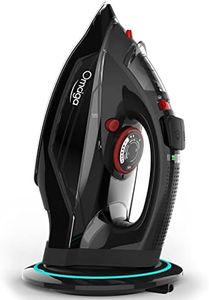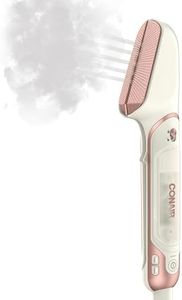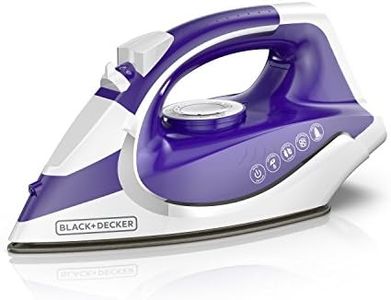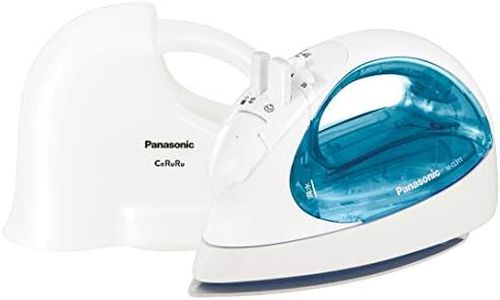10 Best Cordless Iron 2025 in the United States
Our technology thoroughly searches through the online shopping world, reviewing hundreds of sites. We then process and analyze this information, updating in real-time to bring you the latest top-rated products. This way, you always get the best and most current options available.

Our Top Picks
Winner
Panasonic NI-WL600 Cordless Steam/Dry Iron, 1500W Wide Stainless Steel Plate, Silver/Black
Most important from
5443 reviews
The Panasonic NI-WL600 Cordless Iron is a solid choice for anyone seeking convenience in ironing, particularly those tired of tangled cords. With a powerful 1500W output, it heats up quickly, allowing for efficient ironing on various fabrics. Its cordless design is a significant advantage, freeing users from the constraints of traditional irons and enabling smooth, multi-directional movement thanks to its unique 360° Freestyle soleplate. This dual-tipped stainless steel soleplate glides easily over fabric, reducing the risk of tugging or creating further wrinkles.
One of the highlights of this iron is its versatility in temperature settings and steam options, offering customizable heat and steam levels for different fabric types. The vertical steam feature is especially handy for de-wrinkling hanging garments. Its lightweight design, at just 4.4 pounds, enhances portability, and the included carrying case makes it easy to store or transport.
While the cordless operation adds convenience, some users may find that the battery life can limit extended ironing sessions. The water tank capacity is also relatively small, which means frequent refilling may be necessary. Additionally, while its performance is generally well-regarded, those who prefer a more traditional iron experience might find the cordless feature takes some getting used to. The Panasonic NI-WL600 is an excellent option for casual users and those looking for portability and ease of use. It’s perfect for quick touch-ups or for those who perform light to moderate ironing tasks. However, heavy-duty users or those needing longer uninterrupted sessions might want to consider these limitations before purchasing.
Most important from
5443 reviews
Panasonic Cordless Iron, Portable 360-Degree Freestyle Dry/Steam Iron with Precision Tips and Stainless Steel Soleplate, Anti-Calc and Anti-Drip, Power Base and Carrying/Storage - NI-QL1000A (Blue)
Most important from
808 reviews
The Panasonic Cordless Iron, model NI-QL1000A, is designed to offer a convenient and efficient ironing experience. One of its significant strengths is the cordless operation, which eliminates the frustration of tangled cords, making it easier to iron large areas as well as tackle detailed work. The 360-degree movement allows for natural maneuverability, ensuring you can reach tricky spots without hassle. The stainless steel soleplate glides smoothly over fabrics and has a non-stick coating, which is beneficial for cleaning off any glue or residues from crafting projects.
When it comes to steam output, the iron features powerful vertical steaming capabilities, allowing you to remove wrinkles from hanging garments without dripping water, thanks to its anti-calc system. Furthermore, its portable design, complete with a lightweight carrying case, makes it an excellent choice for quilters and those who attend sewing meet-ups.
There are areas where the Panasonic Cordless Iron might not meet everyone's needs. The weight of 4.5 pounds could be a concern for users who prefer lighter irons, especially during extended ironing sessions. Additionally, some users may find that the battery life could be a limiting factor for larger ironing tasks, as cordless devices typically require recharging. Finally, while the heat-up time is acceptable, it may not be as quick as some traditional corded models.
Most important from
808 reviews
OMAIGA Cordless Iron, 1550W Iron with Steam, 2-In-1 Cordless/Corded for Clothes 12.85oz Water Tank, Anti Drip Steam Ceramic Soleplate and 5 Temperature Settings, Purple (KB-951RV)
Most important from
1354 reviews
The OMAIGA Cordless Iron offers a unique 2-in-1 design, allowing you to switch between cordless and corded modes easily. This feature provides flexibility and convenience, especially when tackling large ironing tasks. Its powerful 1550W output ensures quick heat-up time, and with five temperature settings, it caters to a wide range of fabrics, making it versatile for different ironing needs.
The ceramic soleplate is a standout feature, providing even heat distribution and smooth gliding, which is essential for protecting your clothes and speeding up the ironing process. The large 12.85oz water tank supports extended ironing sessions and reduces the need for frequent refills, a plus for those with lots of laundry. Additionally, the self-cleaning and anti-calcification features help maintain the iron’s longevity.
The iron's safety features, such as the triple auto-shutoff system and anti-drip functionality, are important for preventing accidents and ensuring efficient use. However, at 3.63 pounds, it might feel a bit heavy for some users, which could be a drawback during long ironing sessions. Also, while the 60 seconds of continuous steam in corded mode is useful, some users may find this duration a bit limiting. Despite these minor drawbacks, this iron is well-suited for home use and professional settings, offering reliable performance and ease of use.
Most important from
1354 reviews
Buying Guide for the Best Cordless Iron
Choosing the right cordless iron can make your ironing tasks more efficient and enjoyable. Cordless irons offer the convenience of movement without the hassle of a cord, making them ideal for quick touch-ups and ironing in tight spaces. When selecting a cordless iron, it's important to consider several key specifications to ensure you get the best fit for your needs. Here are the key specs to look out for and how to navigate them.FAQ
Most Popular Categories Right Now
